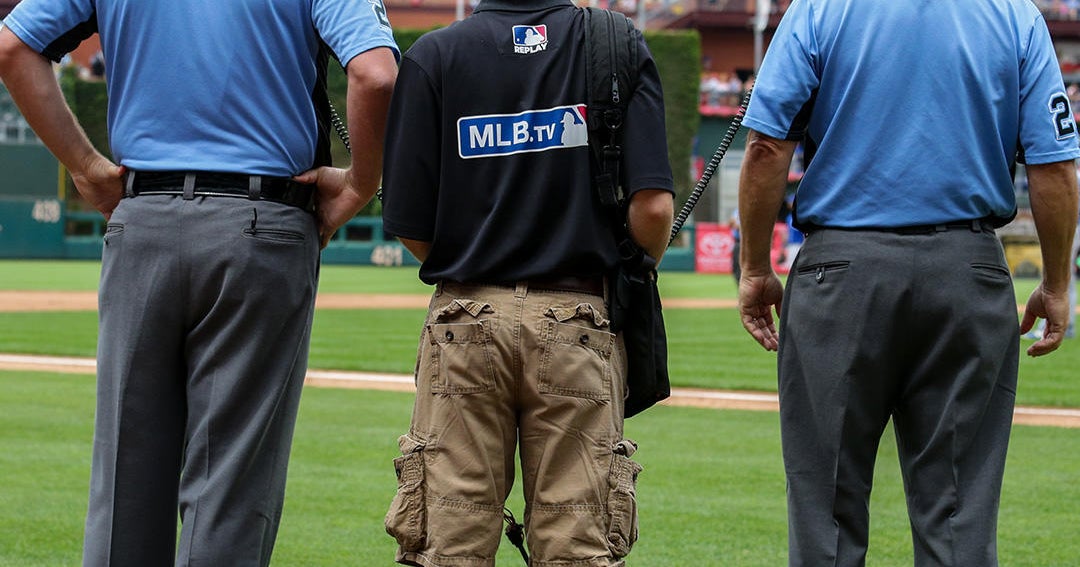
Major League Baseball faces a possible shutdown for the first time in decades, with team owners and ballplayers still at odds over a new collective bargaining agreement. The current pact expires just before midnight on Wednesday, opening the door for owners to call a lockout — management’s version of a strike.
Representatives from both sides have been meeting privately in Irving, Texas, for days in an effort to reach a deal on issues including player pay, anti-competitiveness clauses and free agency rules. Yet progress has been fitful at best.
“Hearing the tone in negotiations, the lockout seems like that’s a very likely scenario, let’s say that,” Max Scherzer, a member of the players’ union executive subcommittee, told CBS Sports on Wednesday.
If there is a silver lining it’s that the dispute is happening during the MLB offseason. That could leave enough time for a resolution and before the regular season kicks off next spring. Still, a prolonged lockout could cost clubs and players a lot of money in salary, ticket sales and more.
What happens at midnight?
The union representing MLB players signed a 5-year employment contract with the league in 2017. That contract will expire at midnight on Wednesday. Without a new contract, players will essentially go into the 2022-23 season not knowing what pay or working conditions they are operating under.
Technically, there’s a chance the league and its players could reach an agreement in the coming hours, but the window for striking a deal is closing fast. Meanwhile, negotiations in Texas are expected to continue, while it’s unclear if or when owners would start a lockout. If that occurs, it would mark the first halt of MLB operations since the 1994-95 season strike.
How long could a lockout last?
It’s hard to say for sure, but a lockout could potentially last for days, weeks or even months. For historical context, the 1994 strike lasted roughly 230 days, and a 1990 lockout wiped out most of that year’s spring training games.
Timing is everything when you’re working on new contract negotiations, said Joel Maxcy, a sports economist at Drexel University who specializes in labor relations. In MLB’s case, a lockout in early spring would harm players — and their wallets — mostly because that’s when the first round of spring training paychecks go out.
To increase their leverage with the league, players could call a strike in early October of 2022, when the regular season is over and revenue for the playoffs is on the line.
The hope is that MLB never reaches that point, Maxcy told CBS MoneyWatch. MLB may be able to avert a lockout because “for the owners, there’s no revenue coming in right now anyway,” he said, noting that an impasse would mean an additional season of reduced revenue — something team owners are eager to avoid.
What are the players and team owners fighting about?
A major issue, not surprisingly, is pay. The dispute is happening at a time when MLB’s revenue has grown but player salaries have declined.
The league generated a record high of $10.3 billion and $10.7 billion in revenue in 2018 and 2019 respectively, according to Forbes. But those numbers cratered to about $4 billion in 2020 because of the coronavirus pandemic. Meanwhile, the average baseball player salary sits at $4.1 million, down almost 5% from 2019, according to the Associated Press.
Players say they’re earning less because they’re getting a smaller percentage of the league’s yearly revenue. Team owners want to maintain the status quo because the expiring contract has largely worked out to their benefit, CBS Sports reported.
But perhaps the biggest area of disagreement between the sides is the issue of “tanking,” Maxcy said. In most major sports, tanking is when a team purposely loses as many games as possible during the season to increase their chances of getting the top young talent from colleges.
In baseball, however, teams may tank because it means they’ll get a higher percentage share of league revenue at the end of the season, Maxcy said. That’s because MLB tries to level the competitive playing field between teams by ensuring every club gets roughly the same revenue every season. Teams that lose a lot tend to generate less revenue from their stadiums and merchandise sales, so the league sends money to make up for that loss.
The practice has caused some player salaries on certain teams to either decline or remain flat. Both sides are negotiating new ways to discourage a team from tanking, but have yet to resolve the issue.
What are the financial implications of a long lockout?
Depending on how poorly negotiations progress in coming days, team owners could start a lockout that extends well into spring training and into the 2022-23 season, which is scheduled to begin March 31. But Maxcy said that scenario isn’t in their interests.
“If this gets to the point where they start to cancel games and can’t make them back up, then you have attendance revenue lost,” he said.
And there would be other headaches. Players wouldn’t get paid. Teams wouldn’t sell tickets. The league itself, which is under an estimated $3.75 billion broadcasting contract with TBS until 2028, according to Forbes, would have to compensate TV networks for games that went unplayed and untelevised.
Bottom line: All sides would take a hit financially if a lockout or strike creeps into the regular season, Maxcy said.

